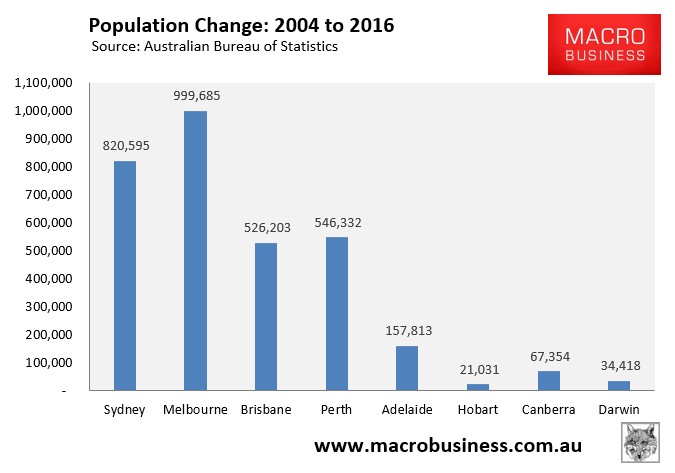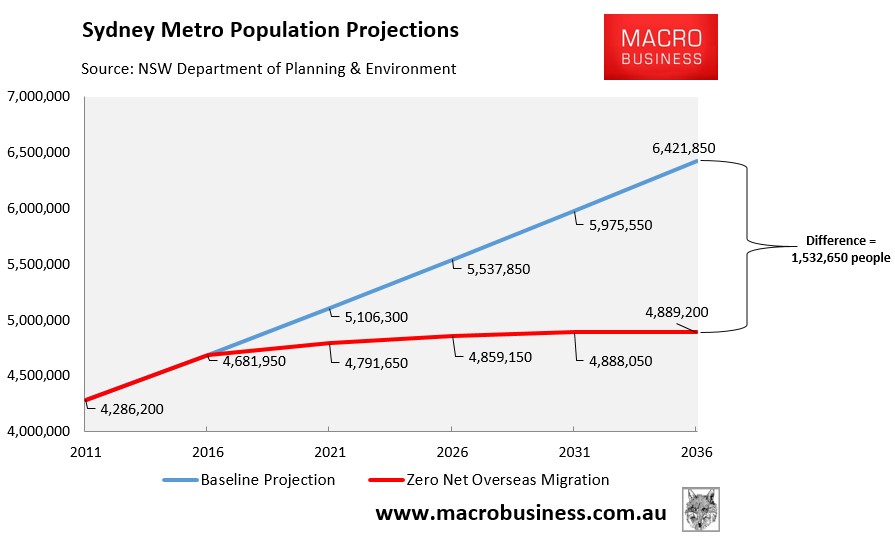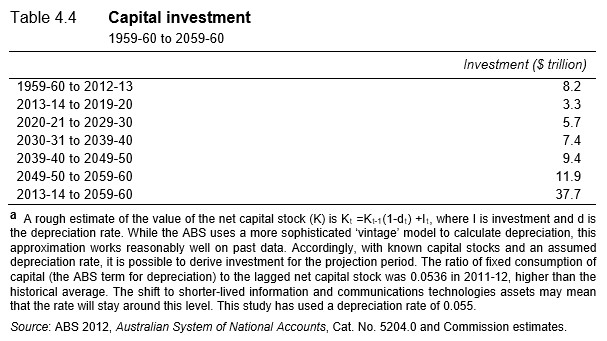ABC’s Radio National ran a half-hour segment on Sunday entitled “WestConnex: Good debt or bad debt“, which questioned whether the nation’s biggest transport project – the $17 billion 33 kilometre motorway under construction in Sydney (more expensive per kilometre than the Chanel Tunnel) – is worth the cost and will solve Sydney’s traffic congestion woes.
The segment notes that WestConnex will create some major indigestion for Sydney residents, especially those living in the West. For the first time, existing free public roads (that have already been paid off) will be tolled to help fund the WestConnex project. This includes the state-owned M4, which has already been paid for and will be subject to a new toll from July based on minor extensions.
The segment also features a wide range of guests, many of whom are skeptical of the project.
For example, Terry Lee Williams, Chief Transport Adviser at the City of Sydney, is unsure of the benefit of investing in a mega road project like WestConnex, and would prefer to see increased spending on public transport:
“On global scales and measures of amenity for cities – you know, how good is the city of Sydney compared to everybody else – we’ve been sliding down the scale very rapidly over the past six years. So we used to rank number one to number three on a global scale for cities. We’re now lucky to crack the top ten. And the significant difference is transport. We just can’t get workers in and out of the city in a timely and predicable manner. 87% of those people coming in and out of the city come by public transport, walk or cycle. Very few of them drive. We need more public transport to solve that problem. We don’t want to bury all of the public funds… into roads projects…”
Professor Peter Newman, a member of Infrastructure Australia (IA), also claims WestConnex is the brain fart of former Prime Minister, Tony Abbott, and did not have support from IA when it was initially announced:
“When Prime Ministers design roads, its not necessarily the right thing for a city. And that was certainly the case in these three roads” [the others being the defunct East-West Link and the Perth Freight Link].
Newman also claims that IA was interfered with politically to subsequently give WestConnex its tick of approval and addition to its infrastructure priorities list.
Blacktown Mayor, Stephen Bali, argues that distance-based tolls are unfair on residents of the West, especially given traffic travels at a snail’s pace. He believes there should be a weekly cap on the tolls that residents pay. And toll road operates should only get paid a premium if they actually deliver a faster trip:
“If you are paying to use a road… why should you be paying full freight when you are not getting the satisfaction of the road? If the road is ‘bumper to bumper’, then the price should drop”.
Truck drivers are also skeptical. Road freight volumes are projected to triple, and WestConnex is expected to provide better freight access to Port Botany. But the industry believes that the current design of WestConnex, which stops 8 kilometres away from the Port at St Peters, is the wrong location.
Graham Sifers, a container truck driver, believes WestConnex is already ‘out of date’:
“It looks to me that it’s out of date now. I don’t think they’ve put enough effort in – it should be at least four or five lanes on both sides – to do any good. They’ve gotta look at 10, 20 years ahead. The way it looks to me now, in five years, it will be no good. We’ll be back to square one”.
The former chair of the WestConnex Delivery Authority, Tony Shepard, is a supporter of the project, noting that it will help relieve Sydney’s infrastructure, which is crush-loaded:
“The main intention is to provide a bypass to the city to the west of the city. If we look at our roads at the present time – our major routes at the moment – the Sydney Harbour Crossing is at capacity – that’s the tunnel and the bridge. The Eastern Distributor is at capacity. The Western Distributor is almost at capacity, as is the Anzac Bridge. And so, to provide a link to the south of the city to the western side made great sense”.
What I found most frustrating about this Radio National segment is that it failed to join the dots and mention the underlying driver of Sydney’s infrastructure woes, which has driven expensive ‘solutions’ like WestConnex in the first place: mass immigration.
It is Australia’s mass immigration program that drove the 821,000 (20%) increase in Sydney’s population in the 12 years to 2016:

And it is Australia’s mass immigration program that is primarily responsible for the 87,000 people per year projected increase in Sydney’s population to 6.4 million over the next 20-years – effectively adding another Perth to the city’s population:

The fact remains that in already built-up cities like Sydney and Melbourne, which also happen to be the major magnets for new migrants, the cost of retrofitting new infrastructure to accommodate greater population densities can become prohibitively expensive because of the need for land buy-backs, tunnelling, as well as disruptions to existing infrastructure. Hence, the massive price tag attached to projects like WestConnex.
Accordingly, running a mass immigration program becomes increasingly costly for existing residents. The huge infrastructure costs also force unpopular asset sales, increased debt borrowings and austerity – none of which is a desirable outcome.
In November 2013, the PC released its final report on An Ageing Australia: Preparing for the Future, which warned that total private and public investment requirements over the next 50 years are estimated to be more than 5 times the cumulative investment made over the last half century:
Australia’s population is projected to increase to more than 38 million by 2060 [since updated to more than 40 million]… The likely population growth will place pressure on Australian cities… In response to the significant increase in the size of Australian cities, significant investment in transport and other infrastructure is likely to be required. This is true both within the cities themselves and for the links between regional and major cities. Policies will be needed to reduce congestion problems, and to ensure adequate infrastructure funding and investment efficiency…
Total private and public investment requirements over this 50 year period are estimated to be more than 5 times the cumulative investment made over the last half century, which reveals the importance of an efficient investment environment…
The report also warned that without such massive investment, multifactor productivity – the key driver of living standards – would fall.
Clearly, the most obvious and least cost policy solution to mitigate Sydney’s infrastructure woes is to significantly dial back Australia’s immigration program and forestall the need for costly new infrastructure projects in the first place. Because, under current mass immigration settings, expensive solutions like WestConnex will be required over and over again as rapid population growth outstrips the supply of transport infrastructure.


